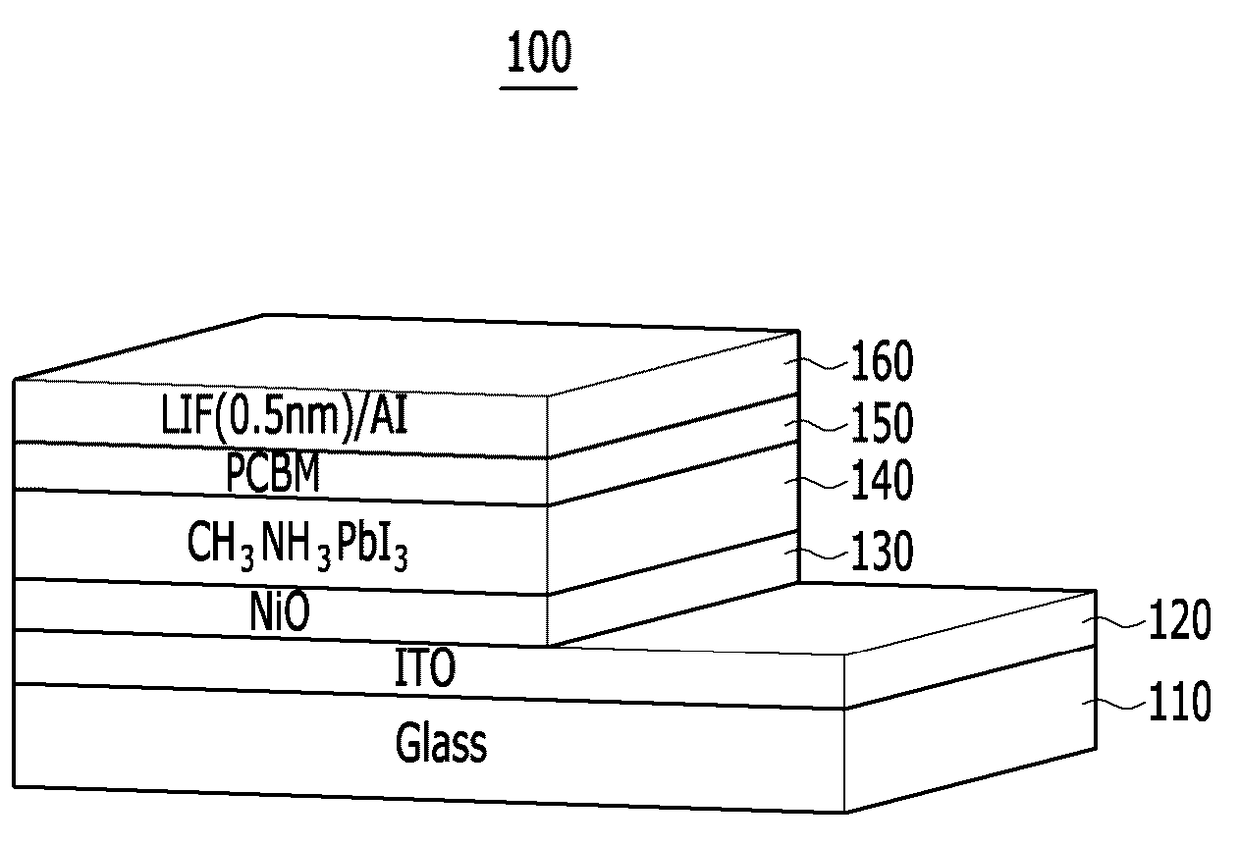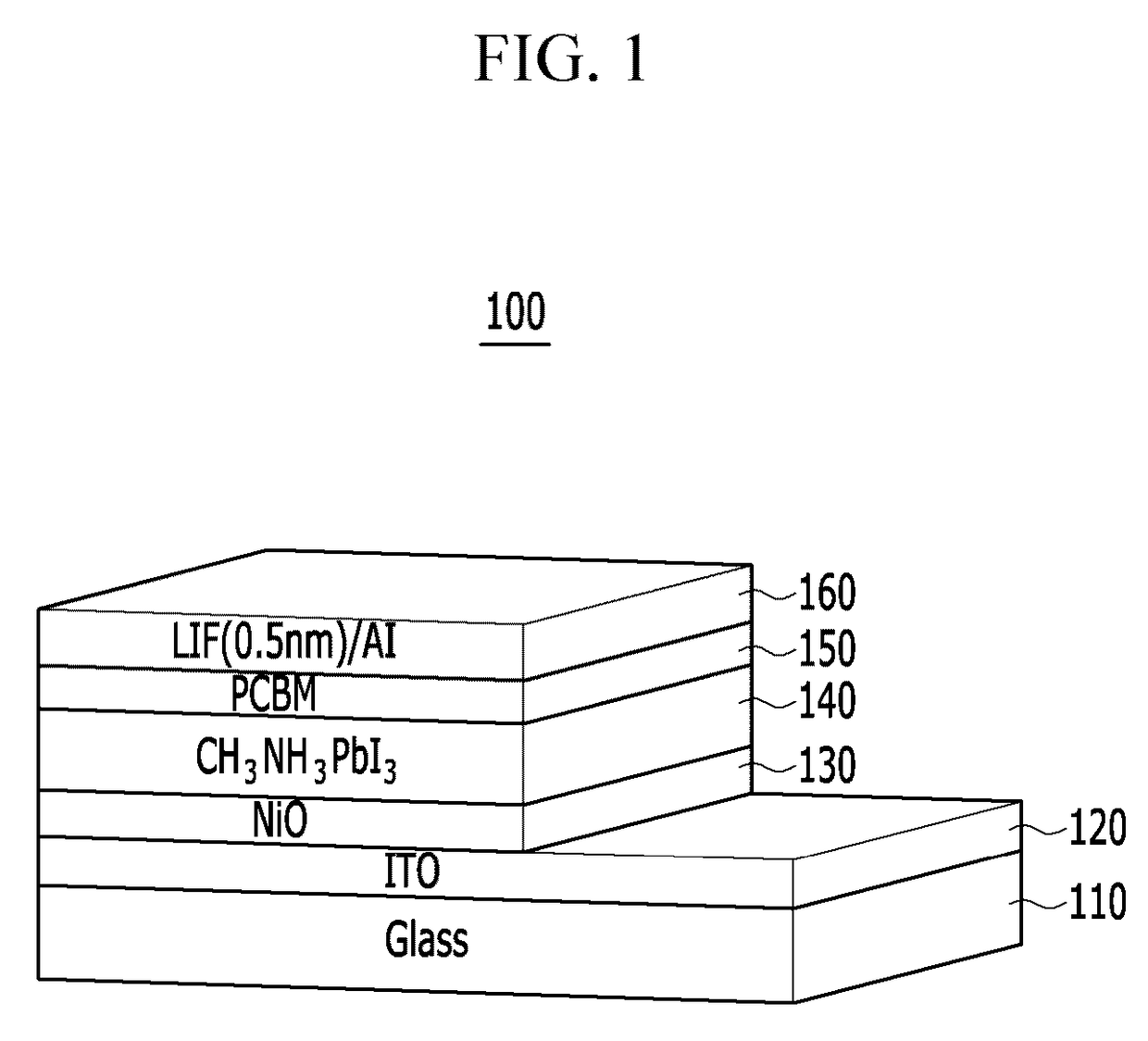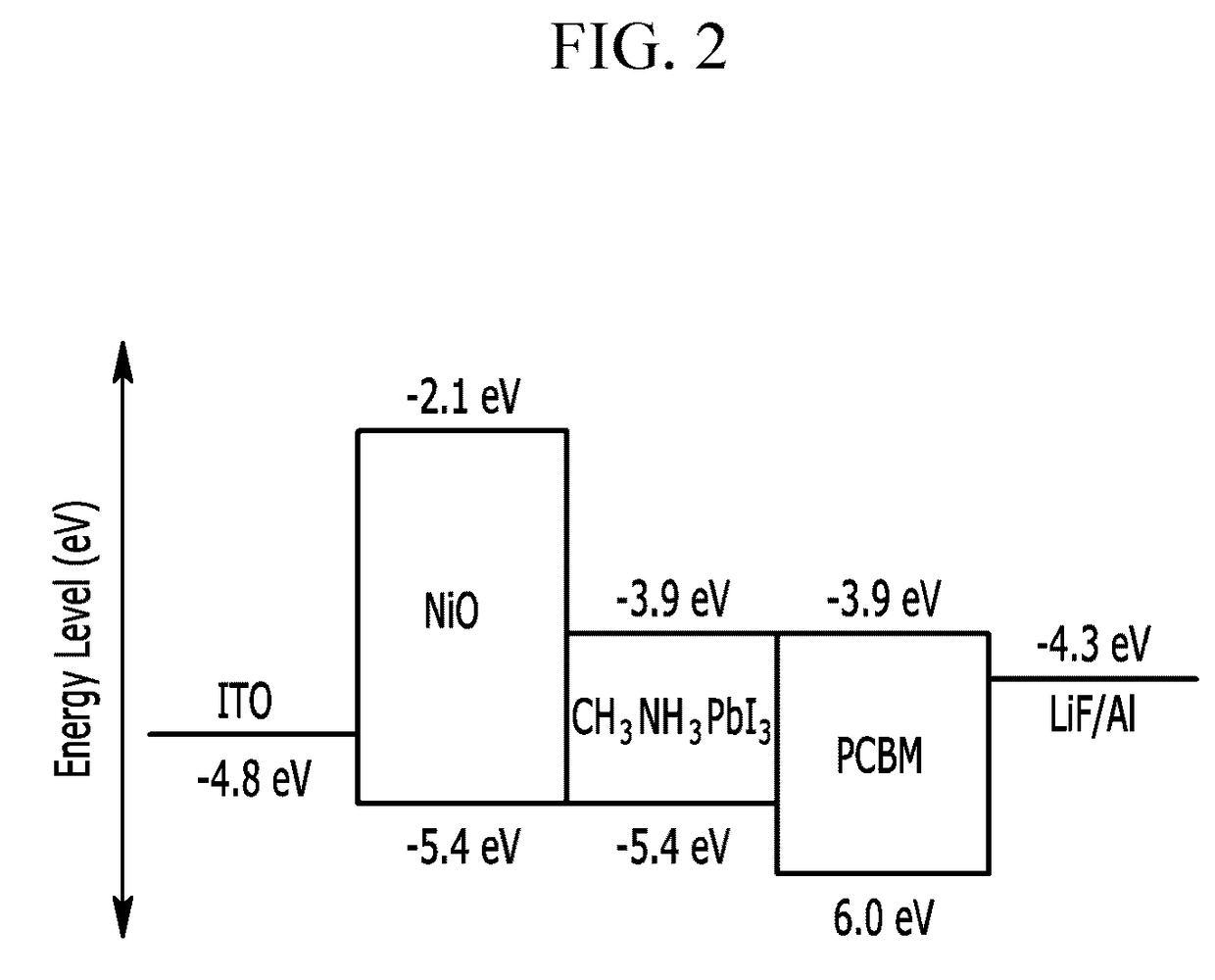Method for manufacturing thin film including nickel oxide nanoparticle and solar cell having the same
a technology of nickel oxide nanoparticles and solar cells, which is applied in the direction of sustainable manufacturing/processing, final product manufacturing, organic semiconductor devices, etc., can solve the problems of deteriorating the overall performance of the device, deteriorating the long-term life or reliability of the device, and corrosion at the interface of the pedot:pss with unstable ito, etc., to improve the anti-corrosion effect reduce the current leakage of the thin film, and improve the effect of the power conversion efficiency
- Summary
- Abstract
- Description
- Claims
- Application Information
AI Technical Summary
Benefits of technology
Problems solved by technology
Method used
Image
Examples
example 1
[0091]A precursor solution is prepared by mixing 1 mmol of nickel(II) acetylacetonate (C10H14NiO4) as a nickel oxide nanoparticle precursor with 15 ml of oleylamine (C18H37N).
[0092]Subsequently, the solution is heated at about 110° C. for about one hour while being stirred to release a gas such as oxygen and the like dissolved therein and evaporate moisture.
[0093]Then, the precursor solution is cooled to about 90° C., and a mixture of about 2.4 mmol of borane-triethylamine ((C2H5)3N.BH3) as a reducing agent with about 2 ml of oleylamine (C18H37N) is injected into the precursor solution. The obtained mixture is stirred at about 90° C. for about 1 hour to reduce the nickel oxide nanoparticle precursor into nickel oxide nanoparticles. Then, the solution is cooled to room temperature.
[0094]Subsequently, about 30 ml of ethanol (C2H6O) is added to the precursor solution, and the mixture is centrifuged at about 3000 to 4000 rpm for 15 minutes with a centrifuge to separate the nickel oxide ...
example 2
[0098]A thin film is formed according to the same method as Example 1, except for mixing 1 mmol of nickel(II) acetylacetonate (C10H14NiO4) as a nickel oxide nanoparticle precursor with 15 ml of oleylamine (C18H37N) and additionally adding about 1 mmol of oleic acid (C18H34O2) thereto.
[0099]FIG. 4A is a low magnification SEM image showing the surface of the thin film according to Example 1, and FIG. 4B is a high magnification SEM image showing the surface of the thin film according to Example 1. FIG. 5 is a SEM image showing the cross-section of a solar cell including the thin film of Example 1 as a hole transport layer.
[0100]The solar cell 100 shown in FIG. 5 may have a structure in which a substrate 110 including glass, a first electrode 120 including ITO, a hole transport layer 130, the thin film according to Example 1, an active layer 140 including CH3NH3PbI3, an electron transport layer 150 including PCBM (phenyl-C61-butyric acid methyl ester), and a second electrode including L...
PUM
| Property | Measurement | Unit |
|---|---|---|
| temperature | aaaaa | aaaaa |
| temperature | aaaaa | aaaaa |
| thickness | aaaaa | aaaaa |
Abstract
Description
Claims
Application Information
 Login to View More
Login to View More - R&D
- Intellectual Property
- Life Sciences
- Materials
- Tech Scout
- Unparalleled Data Quality
- Higher Quality Content
- 60% Fewer Hallucinations
Browse by: Latest US Patents, China's latest patents, Technical Efficacy Thesaurus, Application Domain, Technology Topic, Popular Technical Reports.
© 2025 PatSnap. All rights reserved.Legal|Privacy policy|Modern Slavery Act Transparency Statement|Sitemap|About US| Contact US: help@patsnap.com



